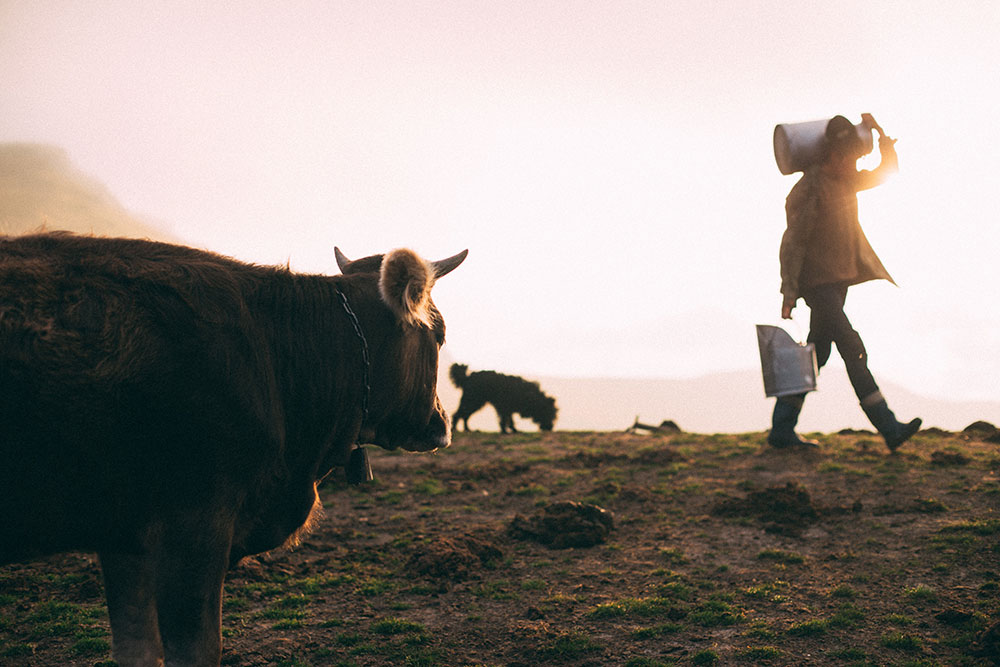Good quality milk is essential for production of good quality dairy products, taste and flavor, free from pathogens and long keeping quality. Good quality dairy products cannot and can never be made from poor quality raw milk. Good quality raw milk must be: Free from debris and sediment, Free from off-flavors, Low in bacterial numbers, Normal composition and acidity, Free of antibiotics and chemical residues.
In order for milk to reach the processor and ultimately the consumer still in good condition, a number of things must be observed right from the farm level to the processing factory, and thereafter to the retailers and consumer. To achieve these the following essential steps need to be put into consideration in the whole value chain of production:
Milk production at the farm
Whether milking by hand or machine, good hygiene is essential. This requires that the milkers hands and clothes are clean and he or she is in good health, The milking machine and milk storage equipment such as milk churns are kept clean and are in good condition (i.e. without cracks or dents which are difficult to clean and can easily harbor bacteria. Immediately after milking, the milk must be cooled preferably to 4 C. This requires mechanical refrigeration or milk cooling tanks. These are expensive and can usually be afforded by large scale commercial farms. For small scale dairy farmers, setting up a milk cooling centre centrally may be the ideal solution. Where farmers bring their milk to a cooling centre through a co-operative, they should do so as soon as milking is completed. Under a hot environment milk will spoil within 3-4 hours. So any means of cooling that will lower the temperature of milk from 38 C at milking will help to prevent multiplication of bacteria. There are several options available.
In highland areas such as Kinangop, Limuru , Timboroa where the water temperature can be as low as 10 C, the milk may be cooled down to 2 C using water temperature by one of the following techniques. Immersing milk cans in a water trough connected to a water tap or water spring. Using an in-can rotary cooler. In hot areas like in the coast, Western Kenya, North Eastern, Nyanza, cooling of milk below 3-5 C below ambient temperature may be achieved through use of charcoal lined evaporative cooling cabinet.(These are traditional methods).
Dairy sanitation at the farm
It is in the interest of every farmer and milk processor that the following are observed at the dairy farm.
Proper sanitation of milk cans
Immediately cans are emptied of milk they should be cleaned as follows:
- Cold water rinse.
- Scrubbing with brush and warm detergent (any unperfumed liquid soap will do).
- Cold water rinse.
- Sterilization (sanitization) with boiling water or steam if available or use dairy sanitizing solution such hypochlorite or commercial brand preparations in accordance with manufacturer’s instructions.
- Dry cans on a drying rack. Exposure to sunlight will enhance killing off bacteria during drip drying of cans.
Milking machines
Milking machines should be cleaned according to recommended practice:
- Cold water rinse.
- CIP detergent circulation cleaning with dairy detergent in hot water.
- Hot water rinse.
Timely replacement of worn out rubber parts should be undertaken regularly.
The cows
Follow proper milking hygiene; mastitis cows should be milked last and their milk discarded. Milk from cows treated with antibiotics should not be mixed with milk from healthy cows. Observe the required 4-day withdrawal period. Milk with antibiotics will affect consumers’ health as well as spoiling activity of lactic starter cultures used in cheese, yoghurt and Mala manufacture.
Milk transport vessels (cans and tanks)
All milk transport vessels should be cleaned in the same way as outlined for milk cans above. There should be provision for water at milk cooling centers to enable ALL milk suppliers’ vessels or cans to be rinsed with cold water.
With these we will be able to meet the required standards of good quality milk.80% of the processors do quantity based payment system. If farmers put all these into consideration, we can change the routine from quantity based to quality based payment. Kenyans this is possible.
